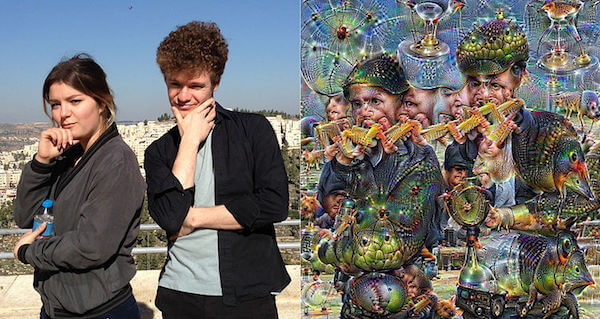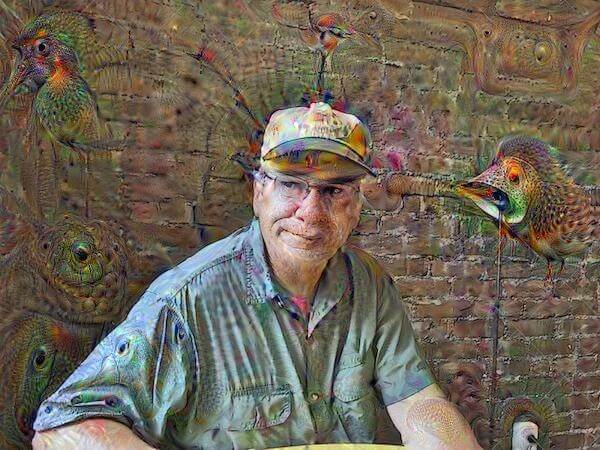Or: Why Is That Cloud Eating Grass?
Everyone plays the game as kids—the one where you look for objects in clouds, right? Even the least-imaginative kids could at least see sheep. Well, it turns out there's a name for it, and it's actually pretty important.

It's called pareidolia. Broadly speaking, this is the brain's ability to perceive a familiar pattern in a stimulus where none actually exists. Other examples: mountainsides that resemble faces and trees that look like people.
People aren't the only entities that experience pareidolia. Computers do it, too. Google has a program called DeepDream that specifically sets out to exploit this, and it produces some really, really weird results. (DeepDream especially sees a lot of dogs.)
Pareidolia is fairly important in science, and it causes a lot of problems in archeology and paleontology. Amateurs are constantly picking up rocks they mistakenly think are arrowheads, dinosaur eggs, or bones. This happens so much that there's a specific name for rocks like this: mimetoliths. This also includes larger rocks, like the mountainsides that look like faces.

Yeah, well.
The most famous applied use of pareidolia is the Rorschach inkblot test, which is supposed to give insight into a person's mental state. A fairly successful tool, we’ve used the Rorschach continually since the early 20th century—fairly astonishing, since psychology has thrown away so much from that time period.
If you're familiar with the tabloid-fodder “Jesus appears on toast” articles, you've stumbled on another example of pareidolia.
It also sees extensive use in art, which is unsurprising. Many optical illusions (like the famous one that could either be a lamp or two faces) are good examples. Leonardo da Vinci wrote about pareidolia as a tool in art. Pareidolia is one of the main reasons cartoons work so well, making it easy for us to assign complex emotions to simple line drawings of people.
Pareidolia isn't good or bad—just reflects an aspect of how our brains interpret the world—but can also lead you astray. This phenomenon is also probably one of the coolest oddities involved in discovering how our brains work.
_________
Quotable
Oh, Yard Ramp Guy: are we seeing the same things differently?
“There are things known and there are things unknown, and in between are the doors of perception.”
— Aldoux Huxley